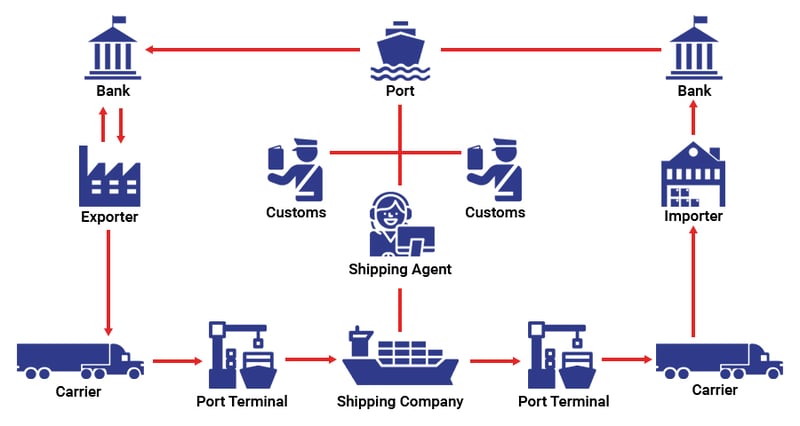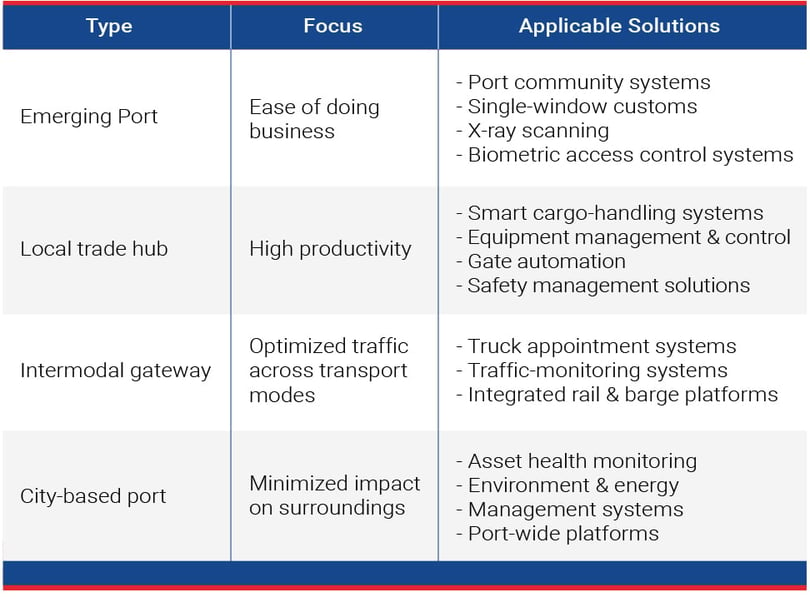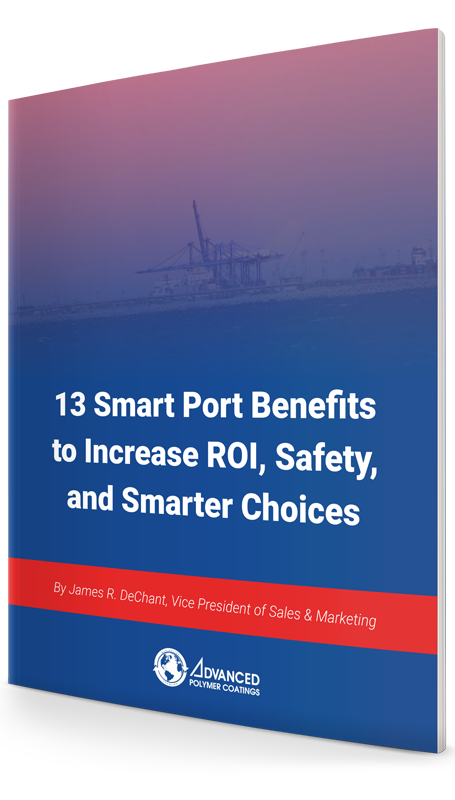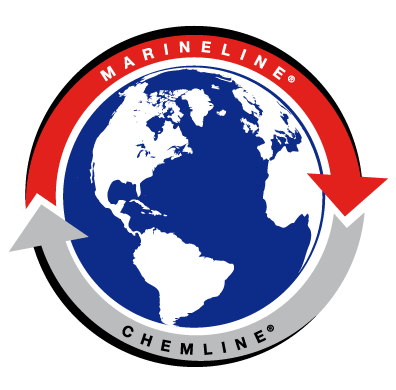What is a Smart Port?
A smart port is an automated port using data analytics to make the right business decisions and run operations effectively. The concept is to use smart technology to increase a port's efficiency, improve performance and economic competitiveness. Implementing automated processes will not only benefit the port but the wider supply chain.
The OECD (Organization for Economic Co-operation and Development) predicts that global container handling in ports could rise to four times the current levels by 2030 and five to six times by 2050. As an industry leader in marine cargo tank coatings, and filling the increased demand for high-performance tank linings, we believe that we need to plan for growth responsibly as an industry. APC sees first-hand the industry's evolution and the critical role we play in the maritime value chain.
This article talks about smart ports, what they are, and why they are important. We have included many industry developments and discussions from various sources about the potential smart technology benefits to improve efficiency, generate higher revenues, and enhance overall decision-making with real-time analytics.
Chapters
Chapter 1
The Economic Importance of Shipping
"Shipping is the lynchpin of a global economy between exporters and importers. Today, about 90% of the world’s goods are transported by water connecting with various land transfer systems, such as rail, truck, and air." [source: Understanding the Maritime Transport Ecosystem]
Globalization has fueled huge growth in the shipping industry. Low-cost shipping is the means that enables countries to import consumer goods inexpensively and export their products in a cost-effective way.
Ports are a vital link between ships and importers and exporters. Port environments have become networks that include port authorities, terminals, shipping lines, carriers, and storage providers.
The Maritime Transport Ecosystem

source: The Maritime Transport Ecosystem
Smart port technologies link the entire port ecosystem.
It becomes essential for a new smart port to be connected to the global supply chain. As the ports continue to digitalize their processes, they create an information hub for their regional transport ecosystem.
So what exactly is a smart port?
Chapter 2
What is a Smart Port and What They Mean for the Environment
What is a Smart Port?
A smart port is an automated port using data analytics to make the right business decisions and run operations effectively. The concept is to use smart technology to increase a port's efficiency, improve performance and economic competitiveness. Implementing automated processes will not only benefit the port but the wider supply chain.
Smart ports are where technology and humans can share real-time information. The effectiveness of smart ports relies on humans and technology working together to benefit the port and, ultimately, its customers. Maintaining a seamless operation is always a challenge and involves communication between many parties and a collaborative approach.
Watch the video below, as Joyce Bliek, Director of Digital Business Solutions at the Port of Rotterdam, underlines the importance of pursuing digital solutions for ports that want to become smarter.
source: Port Technology, What is a Smart Port? - Joyce Bliek, Port of Rotterdam
Smart Technologies/Applications in Smart Ports
The practical usage of connected technologies holds the key to transforming a port into a smart port. Big data, artificial intelligence, IoT, etc. will enable ports to derive actionable insights from the data collected. 5G will further enhance the adoption of IoT.
1. Big Data in the Shipping Industry
The shipping industry will have access to large data sets to improve their logistics and become port smart.
According to Marine Digital, big data is used for managing a ship's sensors and for predictive analysis, which is necessary to avoid delays and increase the industry’s overall operational efficiency. In the shipping industry, properly tracking cargo is very important in maintaining the security and privacy needed.
Traditional technology has been serving organizations’ analytics needs for decades, allowing them to analyze large data sets from conventional sources such as warehousing and distribution systems. Big data takes it to the next level. It will enable companies to harness substantial data volumes, including non-traditional data types such as text, audio, and video, in conjunction with information from business systems in a much more economical fashion, in both batch and real-time modes.
Why You Should Care About Big Data in Shipping and What is Big Data in Shipping?
Big data harness large data volumes. This information is essential whether you are shipping the goods as a vendor or receiving them as a buyer.
2. Artificial Intelligence to Improve Maritime Transport
AI usually refers to Machine Learning, where computers learn over time. Meaning the computers apply algorithms that will improve with experience. For example, AI in the shipping industry can be utilized to strengthen shipping routes. AI can determine the best course at the best speed.
3. Internet of Things Connectivity
Definition - “Sensors and actuators embedded in physical objects are linked through wired and wireless networks.” [source]
loT is looking to help the shipping industry lower operating costs, enable real-time tracking and monitor cargo, and more. With loT connectivity, the data insights will allow valuable data-driven decisions to make ports "smart."
4. Blockchain Technology to Make Shipping Faster
Blockchain technology could prove to be a powerful tool for the shipping industry. It should work together with other technologies that include IoT, automation, and big data.
If the logistics industry adopts blockchain technology, it could make the shipping faster and more efficient and improve data visibility and demand management. [source]
Digital ledger technology, or blockchain, could manage and track the paper trail of millions of containers in the world.
"In 2017, Maersk and IBM developed the supply chain called TradeLens, which is run on blockchain. Some of the largest carriers, port operators, for example, the Port of Rotterdam, and industry actors in the global shipping supply chain have joined this digital shipping network." [source]
There are many benefits of utilizing blockchain for shipping. In the shipping industry, moving to blockchain would create an open platform that is not bogged down with paperwork.
ProShip, a global provider of automated multi-carrier shipping software, discusses the benefits of utilizing blockchain for shipping. The benefits are endless, ranging from quicker processing time, cost reduction, and better customer service.
5. 5G Allowing for Connections of all Kinds to be Made
5G will play a role in providing exceptional voice and data communications. Supply chain management will benefit from data being transferred faster in real-time. It would connect all those in the supply chain.
"5G networks will be more energy-efficient, allowing for connections of all kinds to be made with lower overall power consumption and battery usage. It will also offer consistent, uninterrupted connectivity meaning that 5G signals will be much more reliable than older types of cell signals. 5G has faster bandwidth with peak data transfer rates exceeding 1Gbps. This helps explain why 5G will enable industrial IoT to become omnipresent and disruptive." [source]
According to Charlie Peppiatt, EVP at TT Electronics says, the true Internet of Things (IoT) will become a reality for the following reasons due to 5G deployment:
- Dedicated low-power bands – 5G builds upon current wireless low-power standards like NB-IoT (Narrowband IoT) and LTE-M (LTE Cat-1) technologies.
- Improved, consistent and reliable connectivity
- Lower battery usage
- 5G will allow wireless networks to have a large enough capacity and data transfer rate to keep up with the future's autonomous systems such as the expanded sensor networks.
What does a Smart Port Mean for the Environment?
Using high-end technology as in 5G networks and IoT helps optimize loading and unloading times in ports, leading to fewer emissions. Cutting emissions will improve health benefits globally.
The United Nations has set out an Agenda for Sustainable Development for 2030, which includes 17 Sustainable Development Goals, or SDGs, number 13 focused on climate change.
"At the Livorno port, which handles 780,000 containers per year, 5G networks and IoT solutions are optimizing logistic loading/unloading operations. This means minimizing idle times for ships and the transit time of goods, which in turn helps to cut down on emissions." [source].
Chapter 3
13 Smart Technology Solutions to Improve Port Efficiency
As technology develops, ports need to evolve with technology. More efficient management will be created by communication systems that can share information. Ports need new technology to give them the best insights into their daily activities.
The video below represents six leading ports using the smart port model. Their model consists of intelligent data systems, transparency, sustainability, open innovation, big data, artificial intelligence, blockchain, non-stop service, efficiency, and automation.
Smart Ports: Piers of the Future
"Smart Ports: Piers of the Future," via YouTube July 1, 2019
Smart Port Benefits to Increase ROI, Safety, and Smarter Choices
1. Increase Efficiency
With the rise in volume, a port controls daily; technology can help improve warehouse logistics and inventory, resulting in increased efficiency.
Automatic identification and detection of containers in the smart port will help ports increase handling capacity.
source: The Evolution of Maritime Blockchain
2. Safer Working Environment and Safer Shipping
Artificial intelligence and automation can mean a safer working environment. Accidents will become less common with automation. AI can analyze data to create a more risk-free environment and having this information in real-time can result in a safer working environment.
source: How AI and Automated Shipping Could Improve Maritime Safety
The Maritime Executive cites,
"This covers entrance authorization, video surveillance and analytics, behavior analysis, anti-theft and anti-fraud, and biometric authentication solutions, and sensor-based systems that help vehicles and cargo-handling equipment to be properly aligned for safety, physical and cybersecurity." [source: Smart Ports to Become Global Logistics Information Exchange Hubs]
3. Boost Productivity: Speed up Ship Docking and Reduce Load Times
More cargo can be cleared in less time with a reduction in load times (loading and unloading).
TT (Transport Topics) News reported,
"AI already is in use in automated loading cranes at ports in southern California, New Jersey, and Virginia in the United States; Shanghai in China and Rotterdam in the Netherlands. The AI makes decisions about which containers to stack or unload first based on a database and other analyses."
4. Produce Higher Revenues
Mark Hillsdon, Author at Raconteur cites,
"It is estimated that using this real-time information could save operators as much as $80,000 each time they dock a vessel."
source: How technology is creating the digital ports of the future
5. Faster Decision-making and Better Decisions Through Technology
Smart ports help make intelligent choices. Monitoring and data collection will help make better overall decisions. A virtual version of the port dubbed "the digital twin" can use real-time information to improve decision-making and problem-solving and support predictive planning.
Embracing the Internet of Things (IoT) will help support all decision-making aspects.
6. Improve Security
Artificial intelligence helps with security checks and other automated processes. Technology can control port access for security reasons.
7. Better Management of Resources
AI has the potential to track maintenance on ships and predict when parts may break down. Smart technologies are transmitting real-time data about operating conditions. This enables ports to proactively identify needed maintenance or repairs and thereby avoid unplanned downtime.
8. Integrated Communications System
5G technology enables fast and high bandwidth communication. It offers better energy efficiency and will be more reliable than older types of signals.
9. Enabling Just-in-Time Operations
With the introduction of appointment systems, just-in-time arrivals are enabled. JIT Arrival is a concept in which a ship maintains the optimal operating speed to arrive at its port only when the availability is ensured.
It is estimated that ships spend up to 9% of their time waiting at anchorage. This waiting could potentially be converted to reduced speed and result in less GHG emissions. [source]
10. GPS-based traffic monitoring systems
With the use of digital technology, notifications can provide the ship's movement close to the port.
"Digitalization is changing the way that actors associated with port operations operate. For example,
the traditional role of a ship’s master has already begun to change with an increase in remote
monitoring of a ships position leading to others providing advice or instructions on what speed to use
or what route to take to avoid such things as weather or traffic congestion or to make an optimal
arrival time at a port."
source: Digitalizing the port call process
11. Streamline Customs Information and Documents
Ports will do a better job of handling cargo information and payments, including the processing of trade licenses, import and export permits, and customs clearances.
The leading European ports are experimenting with blockchain technology to reduce costs associated with paper-based cargo documentation and customs payments.
source: To Get Smart, Ports Go Smart
12. Coordinate Intermodal Traffic Better
Coordinate vehicle movement to improve traffic flow between ports and cargo destinations.
source: To Get Smart. Ports Go Smart
13. Improve Environmental Sustainability
The shipping industry is responding with strategies to go "green." As IMO 2020 is fast approaching, shippers have some strategies prepared to become compliant.
From APC's perspective, using the right cargo tank coating in a chemical tanker can have a positive impact. APC's MarineLINE® cargo coating produces an ultra-smooth surface so tanks can be cleaned faster and use less fuel for heating, thus reducing fuel consumption and emissions.
Chapter 4
How Smart is Your Port?
By embracing digital innovation and tools, a port can develop a smart port strategy. The first step is determining your current technologies and embracing new technology that can help improve operations.
Be open to the new technologies, as discussed above. For example, The Port of Hamburg is the second busiest container port in Europe. They put a comprehensive IoT initiative to double the capacity for traffic at the port by 2025. The Hamburg Port Authority's Impressive IoT Project
Understand smart technology is just part of the more significant landscape. Ports must understand the business strategy they want to achieve. Choosing the right tools and technology and aligning them with a port's goals will provide the most value and ROI.
Identifying those areas that are a problem at a port will help determine where new technologies can fit. Port's need to use all their resources to manage and plan appropriately, improve collaboration, and make better investments.
Smart port solutions are not one size fits all
Ports have a wide variety of smart-port technologies to choose from, but the key strategic issues they face should guide the selection process. An emerging port versus an intermodal gateway will have different goals to focus on.
A Port's Individual Needs Drive the Technology Strategy

source: To Get Smart, Ports Go Digital
- Emerging ports need technology that makes it easier to do business.
- Local trade hubs in rapidly developing economies can benefit from improved productivity.
- Large intermodal gateway ports need to optimize traffic across transportation modes.
- Major city-based ports need to operate sustainably to minimize their environmental impact.
In Summary
Smart ports are where the shipping industry is headed. Digital change has its benefits for the port, supply chain, customer, and environment. Smart ports hold the promise of increased efficiency and productivity.
The ability to move swiftly between various cargoes is also important. Selecting the right coating extends the range of cargoes, reduces the time needed to switch them, and delivers the highest return on investment (ROI).
As a quality, premier coatings solutions provider, we provide innovative, value-added coatings to protect your assets.
Image Attribution: "Port-and-Shipyard_Constanta-Romania__16338" by Public Domain Photos is licensed under CC BY 2.0







